Are you a French fries kind of person? If so, the thought of growing your own potatoes would’ve surely crossed your mind.
Growing your potatoes at home where you might have a lack of gardening space and soil is now made possible by hydroponics. Growing hydroponic potatoes will allow you to harvest crops using only water and nutrients.
Growing hydroponic potatoes is not as difficult as you might discern it to be.
But just like any new hobby, it will require you to study things first.
- Related Article: List of Hydroponic Fruits and Vegetables
Why Grow Hydroponic Potatoes?
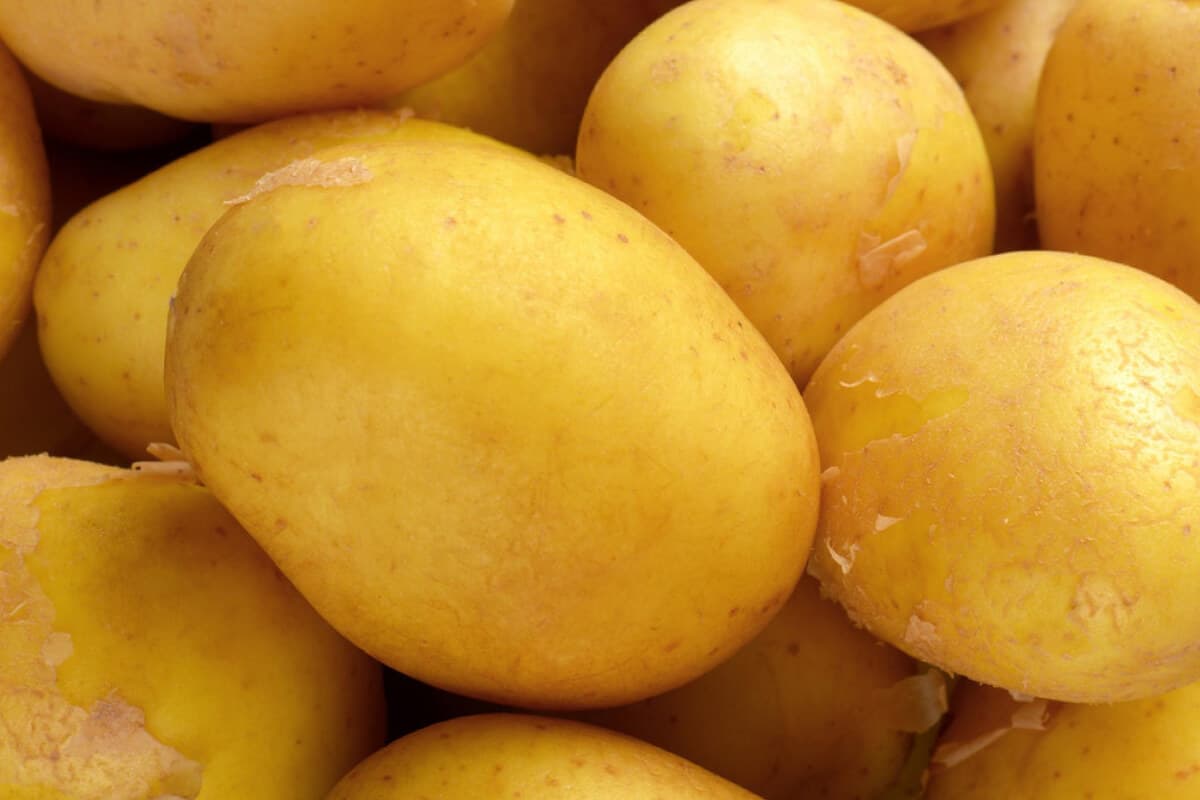
Benefits of Growing Hydroponic Potatoes
- Hydroponically grown potatoes grow faster than soil-grown potatoes.
- Growing hydroponic potatoes will produce a bigger yield compared to harvesting from the soil.
- The occurrence of pests in a hydroponic farm is far less than in a garden.
- There is less risk for soil-borne diseases.
- Hydroponics uses less fertilizer solution than soil.
- Stronger and healthier potatoes are produced.
- You can grow potatoes all year round, even in winter with hydroponics
Drawbacks of Growing Hydroponic Potatoes
- Running all the equipment does cost a bit, so expect a higher electric bill.
- You will need to provide more artificial light than other growing methods require.
- There are waterborne diseases that can affect your plants.
- Growing hydroponic potatoes consumes more water than other methods.
- The equipment needed to grow hydroponic potatoes is expensive.
- Understanding which nutrients to give to your plants can take some practice.
Equipment Needed to Grow Hydroponic Potatoes
The equipment you will need to grow hydroponic potatoes will vary with the hydroponic technique that you decide to use. Equipment that is needed to grow hydroponic potatoes are:
- Air pump/ Air stone
- Filter
- Large grow bed
- Lighting ( LED or T5 grow light)
- pH tester
- Fan/ ventilation system
- Pruning scissors
- Dehumidifier
- Water piping
- Grow trays
- Plant containers
- Water pump
- Water reservoir
How to Grow Hydroponic Potatoes
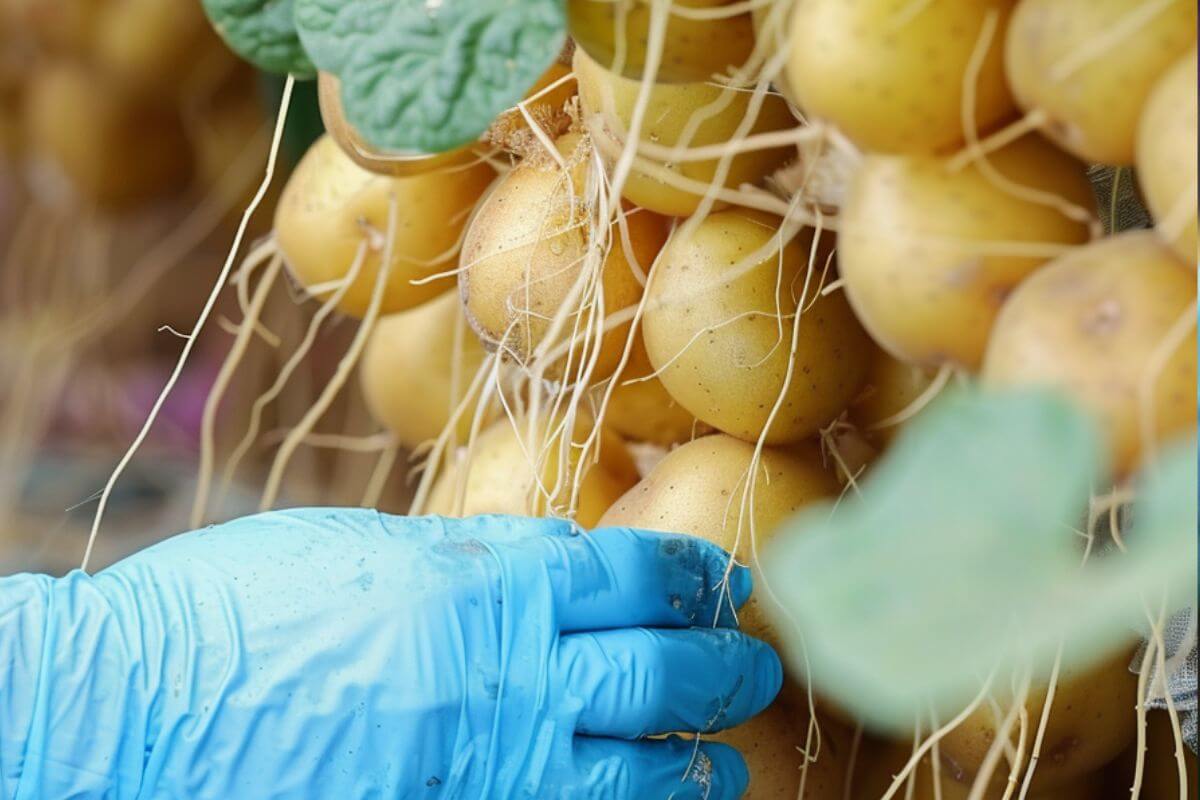
1. Choose the Potato Variety to Grow
For all potato lovers out there, it might be time to celebrate because all varieties of potatoes can be grown in a hydroponic system.
The most popular types are:
- Gold Rush
- Sweet potato (yams)
- Winston
- Casablanca
- Accent
- Charlotte
- Lady Christ
- Jazzy
- Red Pontiac
It’s always advised to grow a variety of potatoes from a seedling, rather than a cutting from an adult.
2. Choose the Hydroponic Technique
When you talk about hydroponic systems, potatoes are not the first thing that would usually come to mind.
This is because potatoes can grow to a very large size and hydroponic gardens are ideal for compact crops with smaller sizes.
But with the many different techniques to grow plants these days, potatoes can now be cultivated hydroponically.
Some of the most used hydroponic techniques are:
- Kratky
- Ebb and Flow
- Nutrient Film Technique
- Drip system
- Deep Water Culture System
- Aeroponics
- Wicking
The best system to grow hydroponic potatoes is the “Nutrient Film Technique”. This technique can be modified and offers the best support system for growing rather large potatoes.
3. Light and Temperature Conditions
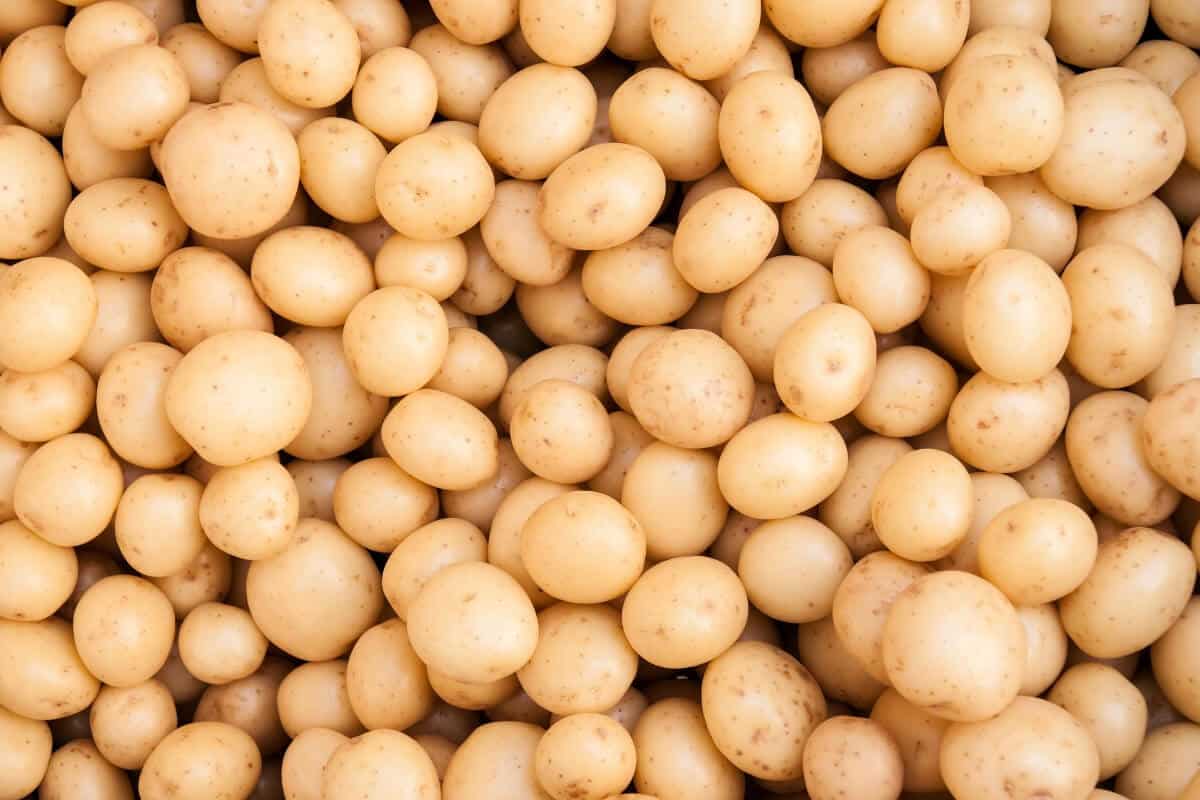
Lighting in hydroponics is a key factor that you don’t want to get wrong.
Potatoes are light-sensitive crops and need sunlight to photosynthesize and create energy for themselves. When devoid of sunlight, their growth and development can be drastically affected.
Give these crops 6-8 hours of sunlight per day and they will thank you for it. For hydroponic potatoes that are grown indoors, expose them to 14-16 hours of grow light per day.
The power of the grow light used will also determine the amount of light needed.
Potatoes grow well in a moderate climate. The air doesn’t need to be the warmest but it mustn’t be cold. The best temperature for growing hydroponic potatoes is roughly between 16 – 19℃ (64℉).
4. Water and pH Levels
Potatoes are generally grown in slightly more acidic soil. That said, you need to mimic the same acidic level but in water.
Potatoes grown in a hydroponic garden should have water with a pH level of 6. Also, the temperature of the water in your hydroponic system must be warm at 70°F – 75°F.
5. Growing Medium
A common mistake among many is using the wrong growing medium.
The best hydroponic growing mediums for potatoes are perlite, due to its ability to draw plenty of water, and vermiculite. These two growing mediums are an excellent choice and can be mixed with clay pebbles to provide support for the potato’s rooting system.
Alternative growing mediums that can be used are coco peat and LECA.
6. Nutrient Solution
In terms of nutrient solution level, make sure to feed your plants with calcium, potassium, and phosphorus as they love these the most.
Give this plant tender loving care with a good amount of boron, zinc, and manganese as well.
The nutrient solution level for hydroponic potatoes should contain low traces of nitrogen, as a high will prevent your potatoes from growing, or produce a low yield.
7. Pollination
Pollination is a natural process by which insects, wind, or humans, transfer pollen from a male plant into a female plant’s stigma. This process will result in the plant bearing its seeds, in either a fruit or a vegetable.
The challenge with indoor hydroponics is the absence of natural pollinators. This means that pollination is entirely dependent on the grower which can be quite a challenging task.
The great thing about hydroponic potatoes is that they don’t require any pollination. Potatoes are self-pollinated and have both male and female organisms.
8. Pruning the Plants
Prune your hydroponic potato plants when they begin to flower by cutting the blossoms off the stems. When your potato begins to flower, it is a sign of the plant’s maturity.
Trimming off the dead foliage from your leaves and removing it will prevent pests from occurring.
The potato plant stems can be cut back should they grow in excess towards your grow light. Potato plants are very fragile, so take a bit of care when pruning them so as not to break the plants.
9. Propagating the Plants
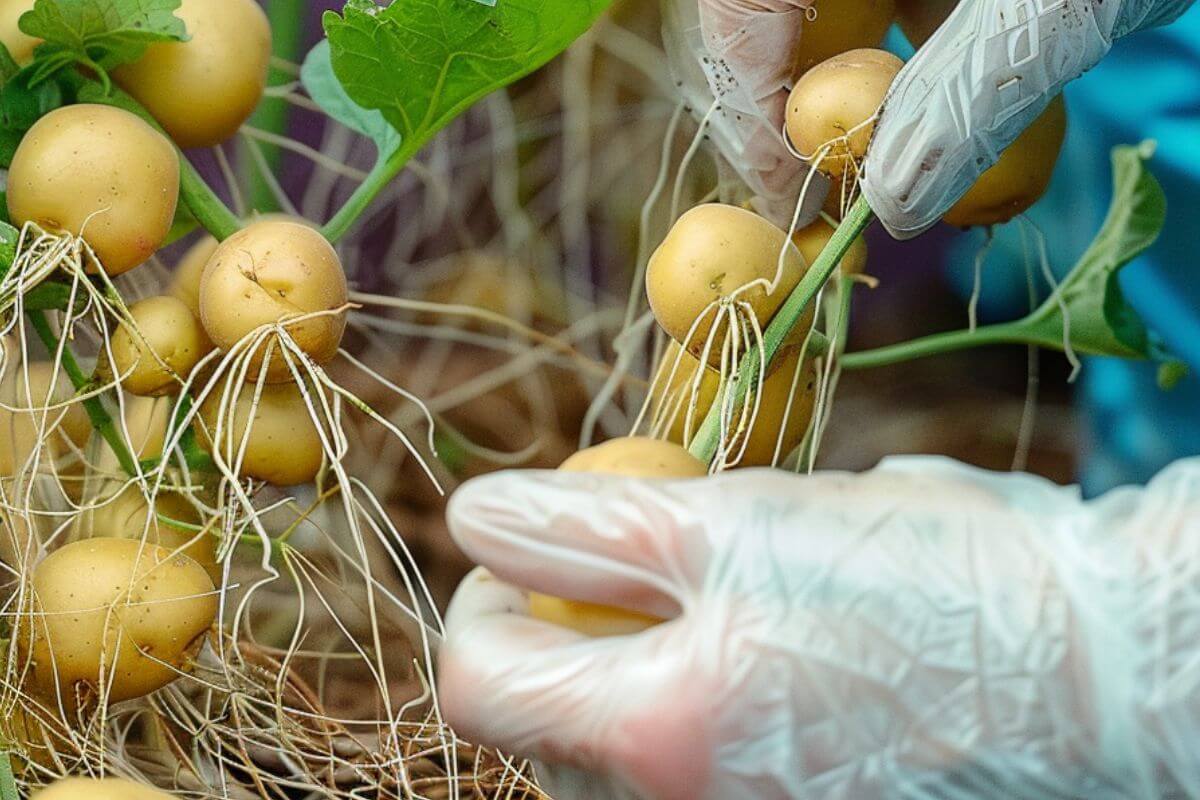
Propagating potatoes can be achieved in two ways, either using cuttings from an adult potato that has sprouted or by planting potato seedlings.
Potato seedlings can be purchased from a nursery.
When planting potato seeds, set up a hydroponic system medium of vermiculite or perlite. Then, place the seedlings 1 inch below the surface of the growing medium.
You can also grow potatoes by using seed potatoes. You can do this by cutting large seed potatoes into pieces, each with one or two eyes. With the cut-side facing down, bury the seed pieces in 1 inch of perlite.
For both options, ensure that the seedling or cuttings are spread four to six inches apart. This is to give your plant enough room for its growth.
Your growing medium should be soaked in water that has a pH of 6. After 10 days your potato seedlings will begin to sprout out of your growing medium. Provide the sprouts with 10 – 12 hours of light per day.
10. Harvesting the potatoes
Hydroponic potatoes can be harvested within 60 – 90 days from seed. This will vary depending on the method and nutrients that have been given to your potato plants.
Your potatoes will be ready to harvest 3 weeks after your potato plant has withered.
To harvest your delicious potatoes, simply remove the growing medium and pull the potatoes out of the medium. Use fresh clean water to remove all the excess dirt.
Troubleshooting Hydroponically Growing Potatoes
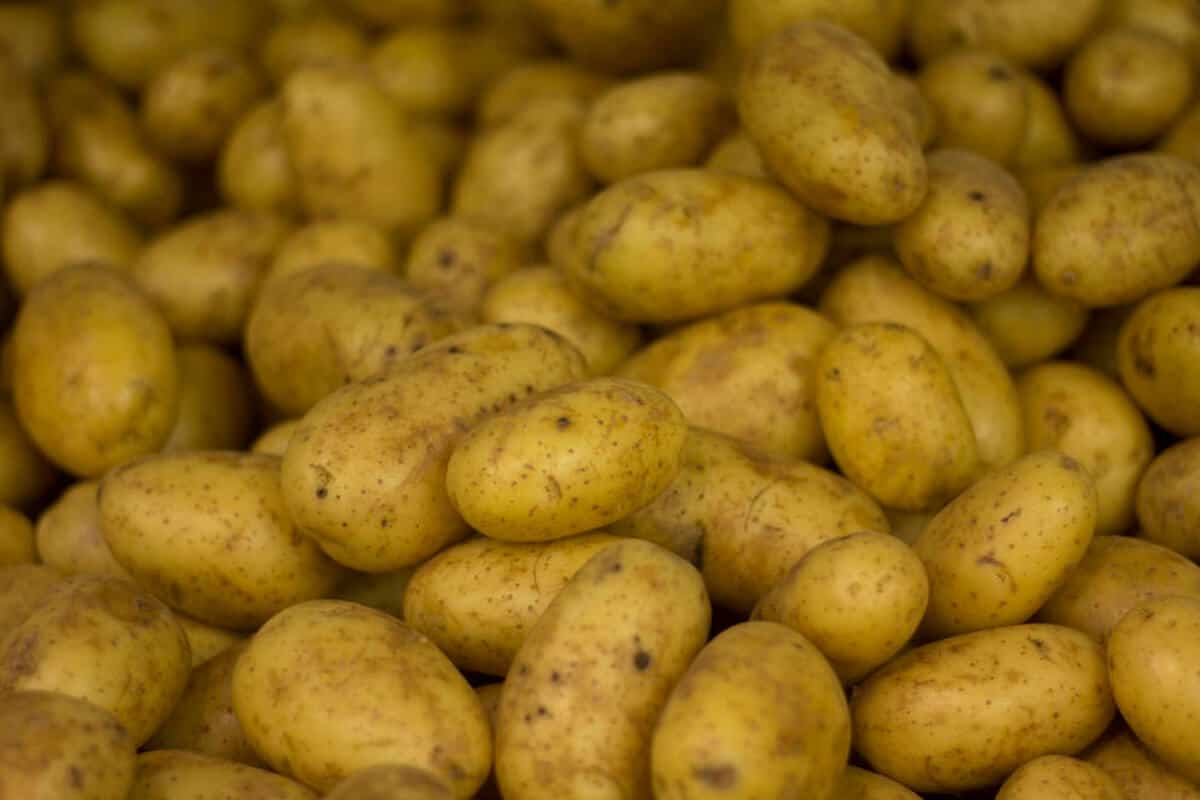
Hydroponic potato plants have the tendency to produce either no potatoes or a small yield, should the incorrect nutrients be given to it. This will prevent the plant from producing potatoes.
Excessive nitrogen isn’t necessary with hydroponic potatoes as well. Feeding your plants potassium and phosphorus is what is necessary.
Avoid giving your plants nitrogen in their solution, when the plants have begun to blossom.
1. Common Growth Problems
A potential disadvantage in growing potatoes hydroponically is growth problems. This is often a result of insufficient light, incorrect pH, incorrect nutrients, overwatering, and using the wrong growing medium.
Root rot will be caused by excessive watering, but that isn’t the biggest problem that hydroponic potato growers face.
The miniature size of their potatoes is a bigger problem and this is caused by the incorrect growing medium being used in a hydroponic system.
Other common growth problems are associated with lighting. It may be due to incorrect hours of lighting or the lighting source specifically.
Equipment failures will disrupt the plants’ cycle and can cause it to suffocate. The plant should always have plenty of oxygen supply.
Algae will always occur in your water reservoir if there is a lack of cleaning and maintenance.
2. Commons Pests
Pests become a threat if plants are not observed on a daily basis. They will always occur and it’s best to prevent them from the start.
A common pest that will attack your potato plants is the “black and yellow striped potato bug”. This pest will start to eat your potato plant as a red larva, and then evolve into a beetle. It will often kill your plants and ruin your harvest.
To prevent this pest from damaging your root crop, place sticky traps around your plants, and spray your plants with Neem oil, should the larvae of beetles make themselves known.
Also, keep your equipment free and clean from any debris before and after using them.
3. Common Diseases
Hydroponic systems create humidity and provide a moist environment for disease to spread. A common disease that hydroponic potato crops are exposed to are:
Bacterial Wilt
Bacterial wilt is caused by a soil-borne bacteria called “Ralstonia Solanacearum”. This disease will enter the root system of potatoes if the plant roots are damaged by equipment or through pests that carry the disease.
This fungus will cause the wilting of the stems of your potato plant. The potato plant will also begin to discolor and turn yellow.
And just like our advice in getting rid of common pests, make sure to clean your equipment before and after using them.
Root Rot
Root rot in hydroponic plants is due to constant dampness and poor oxygen supply on your potato plant’s roots.
The fungus inhabits the rooting system of your plants and prevents them from absorbing any nutrients in the water, slowly killing your plant. Potatoes are heavy feeders and will die without the right food supply.
This is a serious problem that can be prevented by providing a sufficient oxygen source for your plant’s roots. Choose the right technique for hydroponics that will suit your crops’ preferences.
Potato Blight
High-humidity environments are a threat to most plants as they encourage the growth of several fungi.
Potato blight is a disease caused by a fungus and a hydroponic system creates the perfect environment for this disease to ruin your crops.
It will spread through the foliage of your potato plants’ leaves and will begin to enter potato tubers. Potato blight will cause your entire crop to rot should the disease infect your plants.
To prevent Potato blight from appearing in your hydroponic system, simply keep the humidity lower than 40% in your hydroponic grow room.
Final Thoughts on Growing Hydroponic Potatoes
Potatoes are such staples that growing them will most definitely benefit anybody.
Choosing to grow this crop in a hydroponic garden is an innovative way to get potato yields and improve resource efficiency by a multitude.
Through nutrient-rich water, and the ideal conditions of light, humidity, and temperature, even newbie growers will be able to create an environment where potatoes can thrive. You will also produce potatoes that are strong enough to reach the harvest stage.
With proper care, growing potatoes in a hydroponic medium can be as easy as 1, 2, 3. Hydroponically growing potatoes are a fantastic technique to move forward from traditional soil-based methods.
To learn more about growing hydroponic potatoes, check out these amazing articles:

